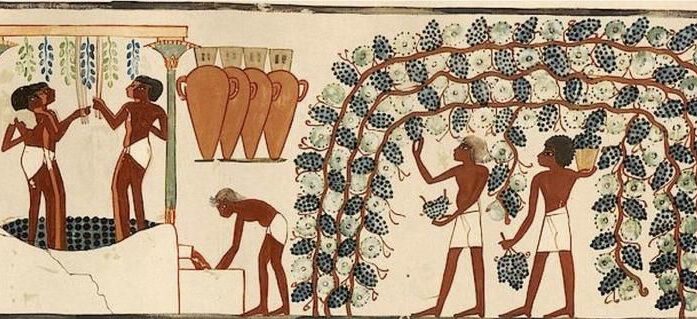Choosing wine for a festive table, our compatriot often finds himself in a difficult situation. Which to buy: dry, semi-dry, red, pink or white. Sweet wine, as an option, is the last thing most buyers consider, considering it to be something like an alcoholic cocktail with sugar syrup. And in vain. There is no sugar syrup in real sweet wine. Unfortunately, those samples for 500 rubles, which are lined with the shelves of our supermarkets, just represent this disgusting mess, which cannot be called wine. The editors of the site "bestx.htgetrid.com/en/" present a rating of the best sweet wines for 2020, compiled by the opinion of professional sommeliers and buyers.
Content
- 1 The history of winemaking and its development in the countries of the world
- 2 Production technology
- 3 Types of sweet wine
- 4 Top manufacturers
- 5 How to choose a decent wine
- 6 Where can I buy
- 7 Rating of quality sweet wines for 2020
The history of winemaking and its development in the countries of the world
Humanity has been engaged in winemaking for 5-7 thousand years. The cradle of this production is considered to be Asia Minor and Central Asia, the countries of the Caucasus, Syria and Mesopotamia. The ancient Egyptians are called one of the pioneers in the production of intoxicated drinks. He was prepared for ceremonies and holidays. Consumption was not massive, therefore production was not distinguished by large volumes.
Ancient Greece and the Roman Empire
About three thousand years ago, this occupation was established in Ancient Hellas. Lesvos, Cyprus, Crete, Chios and Samos were especially famous for them. The number of cultivated grape varieties and intoxicating products of its fermentation was then estimated at one and a half hundred.
The fermentation process took place for six months or more in containers that were fumigated with sulfur and placed in basements. Sweet wines fermented in the cold, and sometimes they were infused with raisins. Fermentation of such a product proceeded slowly, from 5 to 10 years. Then it was poured into amphoras, on the surface of which stickers were molded with the indication of the harvest year, the place of production of the product, color and additives. The Greeks added to their drinks:
- salt;
- ash;
- white clay for clarification (removal of turbidity after fermentation);
- olive oil;
- honey;
- thyme;
- cinnamon.
This list of additives is also used by modern winemakers. The product of the ancient Greeks was thick, strong and concentrated. Dried berries and honey additives gave the drink its thickness. Wanting to make the wine less concentrated and intoxicated, the ancient Greeks diluted it with water.
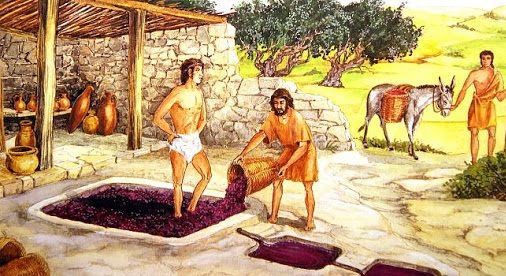
The ancient Greeks drank wine twice a day: in the morning for breakfast and in the evening for dinner.
When drinking libations, the Hellenes adhered to a certain ritual:
- the feast began with the use of undiluted wine with praises to Dionysus, who, as we know, was the god of winemakers;
- then it was necessary to throw out some of the contents from the bowl on the floor (also for the glory of Dionysus);
- wine was served in craters - bowls with two handles - diluted with water from a spring;
- libations were accompanied by pleasant conversation and listening to the musicians playing.
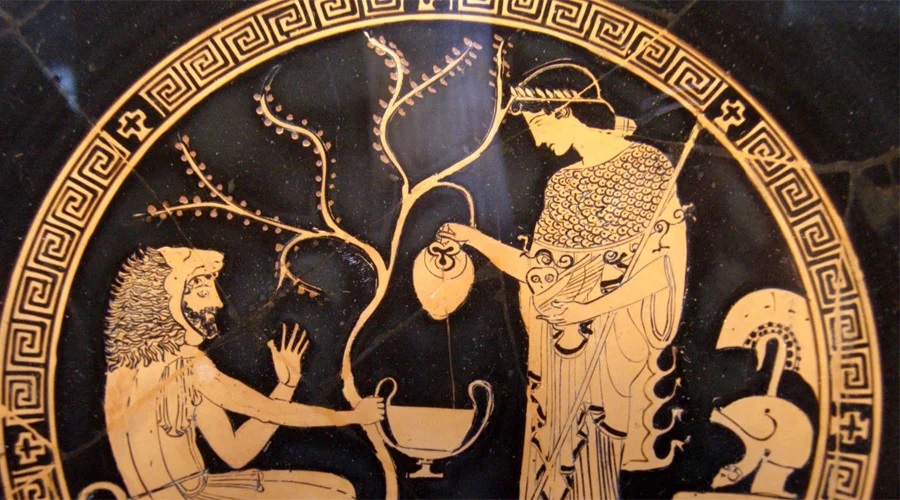
this pleasure was available in ancient Greece only to men. Women were not allowed to the "tastings" (except for the dancers)!
The Romans adopted this art from the Greeks and improved the technology. The era of great achievements is famous among other things for the growth of production and consumption of wine in all provinces. The most popular were the Greek Chios and Italic Falernian.
The production of wine in the empire increased so much that its consumption became available not only to the privileged strata of society, but also to commoners and even slaves, whose wine ration was equal to 600 ml daily.
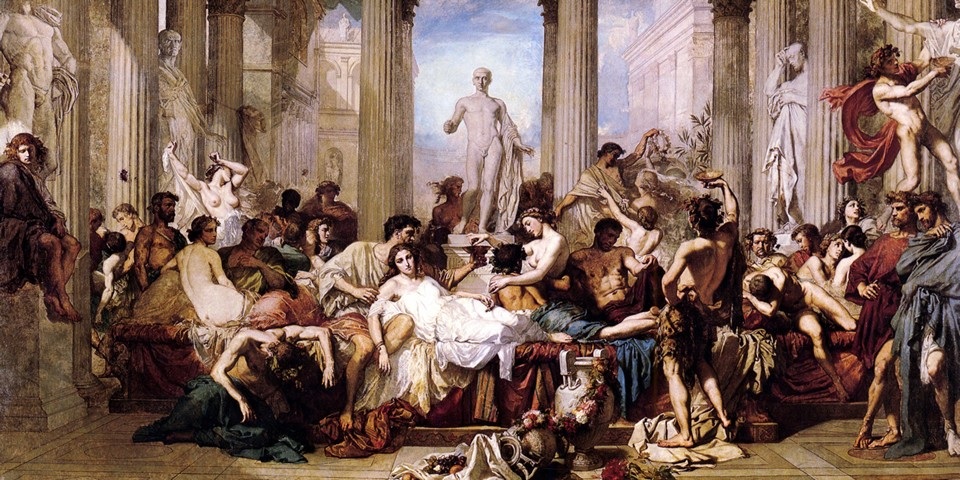
Emperor Marcus Aurelius Probus lifted restrictions on the cultivation of grapes in the provinces and allowed the sale of alcohol, which soon penetrated into the most distant lands of the ancient world, including the Scandinavian countries and Indian principalities.
Northern Europe
Wine exports from Italy to northern European countries led to the development of winemaking in the valleys of the Rhine, Danube, Rhone and Loire. It became popular in Scandinavia and the Indian principalities. In the Middle Ages, its consumption increased everywhere. Surplus production from France, Italy and Spain went to the states of Eastern Europe and Russia.
Unlike southerners, northerners preferred stronger alcohol. Strong brands were in demand in England:
- Madeira;
- sherry;
- port wine;
- Marsala;
- Malaga.
Crimea, Transcaucasia, Asia
Winemaking in the Crimea was still practiced by the Greek colonists. This art, after the conquest of the peninsula by Muslims, was practically destroyed and revived only after the annexation of the peninsula to Russia. Wine was produced in Armenia and Georgia five thousand years ago.
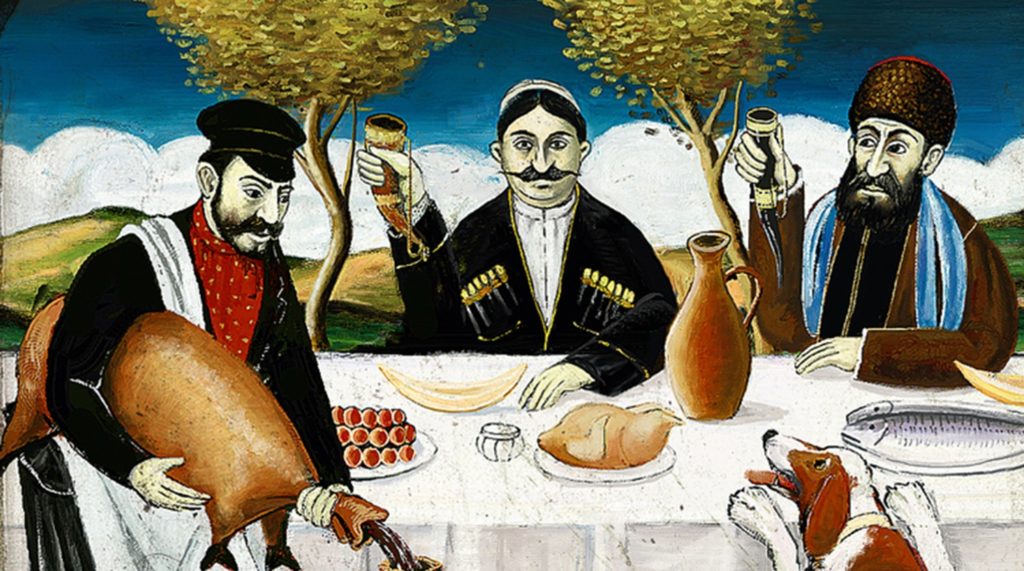
America
Wine and its production were brought overseas by Europeans. The process of acclimatization of European grape varieties took quite a long time. It was produced in Peru, Chile, Argentina and Mexico in the sixteenth century. Today Chilean and Argentine drinks are in demand all over the world.

The French have invested a lot of effort in the development of winemaking in the US and today gourmets can enjoy wonderful drinks from California, New Mexico, Virginia, Washington and Oregon.
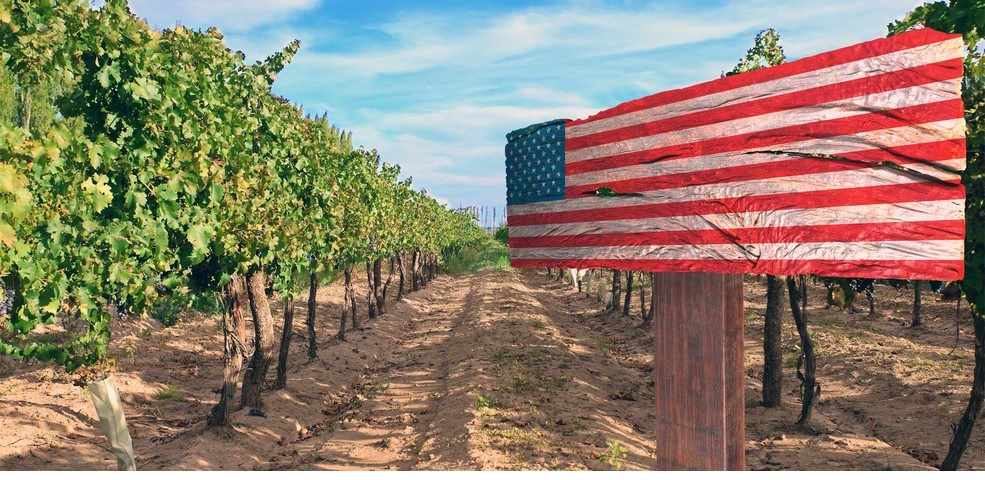
Production technology
Different technologies are used, since the regions differ from each other in climate, soil, grape varieties and traditional methods of winemaking. However, with some differences, all technologies have something in common.
For the production of sweet wine, grapes with increased sugar content are grown.
Let's consider some tricks:
- The easiest way is to artificially increase the sugar content of the final product. Despite the fact that in some countries the production of such a product is quite widespread, it is difficult to call it wine.
- You can stop the process of yeast "eating" the natural sugar contained in the wort. The alcohol content in this case will remain low, and the sugar concentration is high enough.
- Certain grape varieties have a high sugar content. Yeast converts it into alcohol to such a strength at which they (yeast) die and the fermentation process stops by itself. Moreover, the amount of residual sugar is quite large. This is the most common (among serious manufacturers) and difficult process.
- Fixing wine. The fermentation process can be stopped until the sugar is completely converted into alcohol by adding a certain amount of brandy to the wort. This is how port is obtained, for example.
The sugar content of grapes can be increased by reducing the amount of moisture in the berries (to dry them). There are 3 ways:
- Natural. Berries, under certain conditions (autumn, high humidity, low air temperature), are covered with mold. This is the result of the work of botrytis cinerea molds, in other words, gray rot.This infection infects and kills many crops, therefore it can cause serious diseases in humans and cause allergies in those who are predisposed to this. As for grapes, this mushroom eats holes in the skin of the berries through which the liquid evaporates. Berries become drier and contain more sugar. This is how some types of German Rieslings, Hungarian Tokaji and French Sauternes are produced. This technology is costly and dangerous, so the drinks obtained in this way are distinguished by a high price.
- Drying berries. This procedure can be done directly on the vine or by hanging the bunches in a special room or laying them out on straw mats in the sun. This is how Recioto della Valpolicella, Passito di Pantelleria and Pedro Ximenez sherry are produced.
- Freezing berries. This is how Iceweine is made - ice wine. In some areas of Germany, Austria and Canada, the crop is harvested during the period of severe frosts (from -5 °). Where this is not possible, they resort to using refrigerators. Austrian and German Iceweins are in high demand.
Types of sweet wine
The names of sweet wines are well known to the domestic consumer. Each brand has its own history.
Madeira
Vini da Madeira - Madeira wine. This is the name of the Portuguese region, located on the island of the same name. Madera can be different: dry and fortified, sweet and not so, white and red. They are united by the technology of long aging in barrels at high temperatures (from 30 to 45 ° C). As a result of the sugar-amine reaction, the drink acquires the color of amber and its unique taste of caramel with nuts.
Madera was popular with Americans during the Colonial War of Independence from the British crown. Even the Founding Fathers of the United States wrote the declaration of independence, sipping Madeira.
Port wine
Strong Portuguese wine. The marketing law states that only drinks produced in the Douro Valley, which is located on the north-eastern outskirts of Portugal, can carry such a name. Port is classified as a “controlled by origin” name. The production process at first is no different from the preparation of dry and dessert wines.
Bunches of grapes are crushed in granite vats. The fermentation process continues for a couple of days until about 50% of the natural sugar in the berries is converted into alcohol. Then the wine is fixed with grape alcohol. As a result, the product gains a strength of 20 degrees, and contains sugar in the range of 70 to 140 grams per liter. Throughout the winter, the product is kept in barrels, from time to time pouring the contents from one container to another to remove sediment.
Cahors
Fortified red wine. It got its name from the French city of Cahors. There is a legend that the drink came to the liking of Tsar Peter I, who, by order, assigned it to the Russian clergy for holding church rituals. However, this is just a legend. In fact, the sailors first got to know Cahors, and only then he began to be used in the church for communion. For the preparation of Cahors, grapes are used that have collected sugar at least 220 mg / cubic dm. The finished pulp without combs is heated to 65 ° C. Further, the fermenting wort is separated from the pulp and fixed with grape alcohol. The final product gets a dark ruby color, soft, velvety taste, strength from 11 to 16.5% and sugar from 165 to 193 grams per liter.
Marsala
This is the name of the port city on the west coast of Sicily. The inhabitants of the island have been engaged in winemaking since time immemorial. There was one peculiarity in local technology. Wine of the new harvest was poured into barrels with last year's product and repeated every year, so the local drink had a unique taste and aroma.
According to legend, the British merchant John Woodhouse liked it so much that he loaded his ship not with soda, as usual, but with barrels of Marsala, mixing it with brandy so that it would not spoil on the way. The first batch was not successful in Britain, but the merchant did not stop and continued to search for the optimal ratio of Marsala to brandy until he achieved the desired result.Fortified Marsala conquered the British Empire without firing a shot.
Admiral Nelson celebrated the victory at Trafalgar with Marsala, calling it the wine of victory.
Muscat
This type of dessert wines is widely known to the domestic buyer. For their production, Muscat grapes are grown. The drink has a characteristic taste and aroma due to the saturation of grapes with essential oils. Ready-made nutmeg contains up to 16% alcohol and 30% sugar.
Malvasia
A variety of white grapes, common in the Mediterranean, gave the name to the famous sweet wine. Greek "Malvasia" is distinguished by its extraordinary taste and sweetness. The berries are carefully selected and then lightly pressed. This is how the top grade called pigno is obtained. After pressing, a material for the preparation of another variety is obtained - mosto.
Madeira "Malvasia" is the sweetest Madeira. The grape that gave the name to the drink is called "Malmsi" in Madeira. Madeira bears the same name and 85% of the wine material used to make it.
In Russia "Malvasia" was for some time a church wine. we received communion with it.
Of course, not all brands are listed here. We met only the most famous, who have their own interesting and sometimes exciting history.
Top manufacturers
Russian companies
According to Roskachestvo, the best among sweet wines are Crimean drinks produced by Massandra: Yuzhnoberezhny White Muscat, vintage 2011; Red Stone White Muscat, 2014; The seventh heaven of Prince Golitsyn, vintage 2011.
Wine guide of Russia marked:
- Kokur dessert Surozh 2014.
- Madera Crimean (Massandra).
- Porto, Crimean Port.
- Muscat Festival of the Crimean company Solnechnaya Dolina.
- Cahors 2015 INKERMAN.
- Muscat pink dessert 2011, INKERMAN.
Italian manufacturers
Domini Castellare di Castellini is a family production from Chianti. On the market since 1968. Among the sweets produced by the company, special attention should be paid to the passito obtained by the traditional technology of hanging grapes in the sun.
Romano dal Fonto is considered a legend and genius of Italian winemaking, although his products first appeared on the market in 1983. The products of this farm are an example of a successful combination of innovations while carefully preserving traditions. The best sommeliers call the Passito Vigna Sere 2004 the most magical in the history of Italian winemaking.
Cantini Vinci. The 3-family company is engaged in the production of Marsala. Cantini Vinci products have won numerous awards at international exhibitions.
French companies
Bori - Manu is perhaps the largest family business in France, which was formed in 1870. The company has 250 hectares of vineyards, and also produces and sells high quality drinks, classified as a Grand Cru, all over the world. Sauternes Chateau Du Levant is in particular demand among the company's sweet wines.
The list of the best manufacturers from different countries can be continued for quite a long time. Which company is better to buy products is ultimately decided by the buyer. It is helpful to listen to advice and guidance from fine wine connoisseurs or specialty store sellers. The description and characteristics can be studied in the wine guides of the countries involved in the production and export of wine. Then find out how much the item costs and compare this information with the capabilities of your wallet.
How to choose a decent wine
To summarize, you can list the selection criteria that will help you understand what to look for and how to navigate among the many bottles in the wine department:
- Read the contents of the label and counter label carefully. This information can tell everything about the product. If you still have doubts, then return the bottle to the shelf and keep looking.
- Choose products from only the best manufacturers. They won't let you down.
- Do not buy goods bottled in regions where grapes do not grow. Such a product is never of high quality.
- If the label bears the PGI (Protected Geographical Indication) mark, grab the bottle and go to the checkout boldly.This mark indicates that 85 percent of the wine material is grown in the immediate vicinity of the plant, and therefore the material is selected. A quality product is made from selected materials.
- The ZNMP mark means protected designation of origin products. It's even cooler than PGI. It means that everything is under control, from vineyards to technology and aging. High quality. Analogue of European AOC and DOC.
6. Focus on the price. A good product is sold from 500 to 700 rubles. Not always a super expensive product is better than a cheap one. It is not necessary to overpay for it, if it is not a representative gift.
Where can I buy
The best option would be to buy from a specialty store. Here you can carefully study the information on the label and get advice from the seller. High quality products can be purchased from the online store. It is enough to order the product online and it will be delivered from any part of the country. True, trusted companies should be chosen for this.
Rating of quality sweet wines for 2020
Wine worth up to 500 rubles
4.Phanagoria "Number reserve 1957" Kagor Canonical

The quality of this drink can be judged by the name. All winemakers of the world use the term "Reserve" when referring to high quality wine. It is produced from selected grapes from dedicated sites. The harvest begins to be closely monitored even during the ripening period. From this moment on, the control does not weaken at all stages of the process up to the assessment of the quality (tasting) of the final product.
The word "Numbered" means that the amount of reserved wine material, as well as the number of bottles of the finished product, is limited. When creating this series, it was supposed to generally number the label on each bottle. However, they realized in time that this would lead to an unjustified rise in the price of the goods, so a single number was applied to all labels of bottles from the same batch. The presence of the number allows you to determine the origin of the contents of each batch.
Kagor Canonical produced by the Krasnodar company Fanagoria, sweet, with an alcohol content of 13%. The grapes used are Cabernet Sauvignon and Saperavi. The drink has a deep red color. The taste is velvety, round. Chocolate-creamy notes are felt. The sweetness is pleasant, the aftertaste is long. Served with confectionery. Fruit works too.
The average price is 331 rubles.
Advantages:
- selected wine material;
- cherry-plum aroma;
- more than affordable price.
Disadvantages:
- not identified.
3.Massandra "Our Traditions" Madera Crimean

Madeira is white. The grape varieties Sersial, Sabash, Verdello and Albion grown on the company's own plantations were used in the production. Vinification takes place under constant temperature control, after which the drink is kept in an oak container, unfilled to the brim, for 4 years. The finished product is distinguished by its amber color and generous rich taste with hints of walnut. The finish is sweet and long lasting. Fruit and cheese are served to the table.
The average cost is 398 rubles.
Advantages:
- Nice colour;
- Madeira's signature taste and aroma;
- inexpensive.
Disadvantages:
- not identified.
2.Massandra "Our Traditions" Muscatel Black

It is an inexpensive sweet wine made from muscat and red grapes. The alcohol content is 16%. The volume of the container is 750 ml. A drink of noble ruby color and expressive sweetness. The bouquet is dominated by fruit tones. There are hints of prunes in the long aftertaste. The aroma is fruity. Served with fruits, chocolate and sweet pastries.
Average cost: 422 rubles.
Advantages:
- pleasant taste;
- memorable aroma;
- affordable price.
Disadvantages:
- not identified.
1. "Vina Tamani" Cahors 32 dessert

The product produced by the Kuban-Vino plant (Temryuk district of the Krasnodar Territory) receives the best customer reviews. The material was Saperavi, Cabernet Sauvignon, red grapes. The alcohol content is 16%.Rich ruby red color, plum-cherry aroma, prunes. The taste has a slight cherry flavor. The aftertaste is pleasant and long lasting. Served to the table with pastries, desserts, cheeses, nuts. High quality is confirmed by numerous awards at international exhibitions.
Average cost: 426 rubles.
Advantages:
- selected wine material;
- deep color;
- pleasant taste and aroma;
- affordable price.
Disadvantages:
- not identified.
The best sweet wines, costing from 500 to 1000 rubles
3.Massandra "The Seventh Heaven of Prince Golitsyn"

Crimean wine with an intriguing name. Prince Golitsyn Lev Sergeevich founded the first winery in Russia. The white dessert in question was first produced in 1880. A modern product is made according to the classic technology restored at the Massandra plant in 1996. The taste is delicate, exquisite, and therefore will not leave indifferent even an inexperienced consumer. The aroma is complex, honey, and is remembered for a long time. The alcohol content is 16%. Materials: Cocourt, Pinot Gris, Muscat Pink, Moscato Bianco. Fruits, pastries, cheese, cottage cheese desserts are served at the table.
Average price: 531 rubles.
Advantages:
- unique taste;
- delicate aroma;
- inexpensive.
Disadvantages:
- not detected.
2. Muscat Pink Crimean 2011

This is a sweet pink wine produced by INKERMAN plant. The material is pink and black nutmeg from the company's own plantations. Rare varieties of high sugar content (up to 350 g / l of juice). This wine was aged in oak containers for one and a half years. Color pink, various shades. The bouquet is complex. Tea rose, nutmeg and citrus are distinctly audible. Alcohol content 16%, sugar - 20 g per 100 cc.
Average price: 560 rubles.
Advantages:
- wonderful taste and aroma;
- affordable price.
Disadvantages:
- not detected.
1.Massandra "Red Stone White Muscat"

Crimean, white, sweet, single-varietal, (100% Moscato Bianco), Massandra. Aged for at least two years in an oak container. The alcohol content does not exceed 13%. Color - light amber. The taste is delicious: something refined, subtle and elegant with light citrus notes. The aroma is not inferior to the taste with originality and leaves the sensation of honey, grass, rose and orange. Served with a sweet table with pastries, cheese and chocolate.
Average cost: 836 rubles.
Advantages:
- monosortic;
- unforgettable taste and aroma;
- high quality was awarded by more than two dozen gold medals from international exhibitions.
Disadvantages:
- not detected.
The best elite sweet wines
3. Domini Veneti, Recioto Della Valpolichella Classico DOC, 2017

Recotto della Valpolicella is a wine known since the time of the Roman Empire. Produced by the largest farm on lands called the Classico Territory (the so-called historical zone). For all Valpolicella wines they use Molinara grapes, Corvina - the main one, Rondinella. The wines of the Valpolicella region have always been distinguished by their rich, intense taste. The most popular among them is Recioto - a strong and powerful dessert wine - a unique product of this Italian region. Our sample has a dark ruby color with cherry undertones. The aroma is saturated with black currants and prunes, chocolate and spices. Served with a sweet table, biscuits, chocolate. It goes well with cheeses and fruits.
Average cost: 4990 rubles.
Advantages:
- selected wine material;
- classical production technology;
- amazing taste and aroma.
Disadvantages:
- high price.
2.Cantine Intorcia Marsala Superiore Reserve DOC

Sicilian Marsala from the Intorcia family, which is a member of a voluntary consortium dedicated to the protection of Marsala wines. The farm is famous for its dessert wine. Marsala from Intorch - strong, sweet, with an alcohol content of 19%. This wine has been aged in oak containers for 30 years. Monosortic (Grillo100%). Gold medal at Vinitaly in 2014.
Light golden color.The taste is remarkable for its amazing softness, sweetness and long aftertaste. The bouquet contains honey, caramel, nuts and fruits. Served with pastries, cheese.
Average cost: 7212 rubles.
Advantages:
- monosortic;
- thirty years of exposure;
- unique taste and aroma.
Disadvantages:
- high price.
1.Chateau Gilette, Sauternes AOC, 1990

Sauternes from Bordeaux. White, sweet, with an alcohol content of 14.5%. Manufacturer - Chateau Gillette. At one time, the farm was engaged in the production of dry, semi-dry, sweet and extra sweet (Crème de Tête).
Today - only "Creme de Tete". The technology is very complex. The berries grow under the "cover" of the noble mold "Boyrutis Cinerea", which helps to dry the berries and raises their sugar content. A unique product is aged for at least 18 years and only then goes on sale.
Average cost: 34894 rubles.
Advantages:
- the taste with hints of nuts and fruits is simply unique;
- an exceptional aroma reminiscent of fruits, citrons and flowers;
- color - rich amber.
Disadvantages:
- unaffordable price.
As you can see from the above TOP, sweet wines are well known to our consumers, although some brands remain exotic for us. The editors of the site hope that our review has answered some of the questions that arise when buying sweet wine: what are sweet wines, how they differ from other types and how to choose the best. This will help you not to make mistakes when choosing a decent drink.

